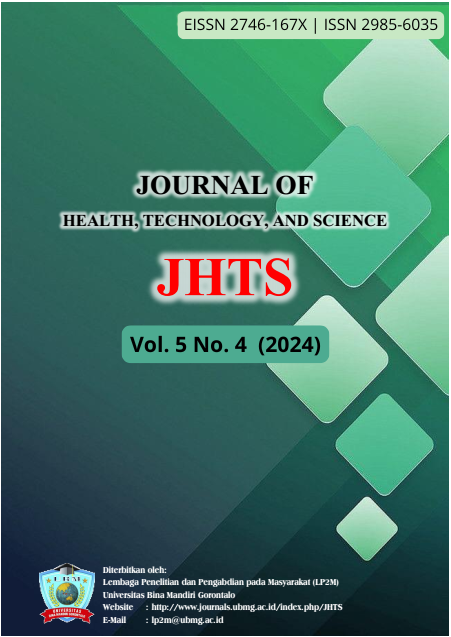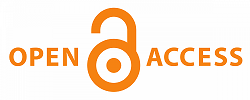ATTITUDE CHANGE OF COMMUNITY BASED SURVEILLANCE (CBS) CADRES THROUGH MODULE DEVELOPMENT IN BARRU DISTRICT IN 2021
English
Abstrak
ABSTRAK
Modul yang diberikan kepada kader community based surveillance (CBS) mampu melakukan perubahan sikap. Perubahan sikap merupakan komponen afektif yang selalu berhubungan dengan komponen kognitif. Apabila komponen afektif berubah maka komponen kognitifnya juga akan berubah begitu pula sebaliknya. Dengan pemberian pengembangan modul, maka sikap kader CBS memahami penyakit yang dapat dicegah dengan imuniasasi (PD3I) sehingga dapat dilakukan pencegahan di masyarakat. Penelitian ini bertujuan untuk melihat perubahan sikap kader community based surveillance (CBS) di Kabupaten Barru. Penelitian ini menggunakan menggunakan pre-experiment design tipe one group pretest-postet. Populasi pada penelitian ini adalah semua kader CBS yang tidak aktif sebanyak 48 kader CBS. Sampel ditarik dengan menggunakan teknik purposive sampling sehingga di peroleh 20 kader. Analisis data menggunakan uji paired t-test dan Wilcoxon. Hasil penelitian menunjukkan bahwa terdapat perbedaan pengetahuan (p=0.000) sebelum dan setelah intervensi pemberian pengembangan modul dan terdapat perbedaan sikap (p=0.000) sebelum dan setelah intervensi pemberian pengembangan modul. penelian ini dapat disimpulkan bahwa terjadi peningkatan pengetahuan dan sikap pada kader community based surveillance (cbs) setalah diberikan pengembangan modul. diharapkan pada peneliti selanjutnya agar memberikan perbandingan terhadap intervensi modul dan media cetak maupun video.
Referensi
[1] Fall IS, Rajatonirina S, Yahaya AA, Zabulon Y, Nsubuga P, Nanyunja M, et al. Integrated Disease Surveillance and Response (IDSR) strategy: current status, challenges and perspectives for the future in Africa. BMJ Glob Heal [Internet]. 2019 Jul 3;4(4):e001427. Available from: https://gh.bmj.com/lookup/doi/10.1136/bmjgh-2019-001427
[2] World Health Organization. WHO Recommendations on Antenatal Care for a Positive Pregnancy Experience [Internet]. 2016 [cited 2023 Aug 26]. p. 196. Available from: https://www.who.int/publications/i/item/9789241549912
[3] Indonesian Minister of Health. Permenkes number 53 of 2014 concerning essential neonatal health services. 2014.
[4] A definition for community-based surveillance and a way forward: results of the WHO global technical meeting, France, June 26 to 28, 2018. Eurosurveillance [Internet]. 2019 Jan 10;24(2). Available from: https://www.eurosurveillance.org/content/10.2807/1560-7917.ES.2019.24.2.1800681
[5] Barru District Health Office. Guidebook for CBS Teams and Cadres, Community-Based Integrated Surveillance. 2018.
[6] Zulikifli A. Child growth surveillance through a learning organization approach. Pustakka Timur; 2012.
[7] Wijaya IMK. Knowledge, attitude and motivation towards cadre activeness in tuberculosis control. J Kesehat Masy. 2013;8(2):137-44.
[8] Murti B. Principles and methods of epidemiologic research fourth edition. Surakarta: Bintang Fajar Offset; 2018.
[9] Sugiyono. Quantitative, Qualitative and Combination Research Methods (Mixed Methods) (Sutopo 8th ed.). Bandung: Alfabeta; 2016.
[10] Maria RD, Fellina M. An overview of the knowledge of mothers who have infants aged 1-7 days about neonate visits at the Padan Kandi Health Center, 50 Kota District. J Kesehat. 2016;5(1).
[11] Pujiati H. Factors associated with the activeness of Posyandu cadres. J Kesehat. 2020;10(1):51-8.
[12] Alamsyah D, Muliawati R. Basic pillars of public health science. Yogyakarta: Yogyakarta. Nuha Medika. Page 67-68; 2013.
[13] Ryadi ALS. Public health science. Bandung. Andi Publisher. Page 68-70; 2016.
[14] Swarjana IK, Bali S. Public Health Science-Concepts, Strategies and Practices. Jakarta. Andi Publisher. Page 56-59; 2017.
[15] Profita AC. SEVERAL FACTORS ASSOCIATED WITH THE ACTIVENESS OF POSYANDU CADRES IN PENGADEGAN VILLAGE, BANYUMAS DISTRICT. J Adm Kesehat Indones [Internet]. 2018 Dec 7;6(2):68. Available from: https://e-journal.unair.ac.id/JAKI/article/view/6472
[16] Hislop D, Bosua R, Helms R. Knowledge management in organizations: A critical introduction. Oxford university press; 2018.
[17] Notoatmodjo S. Science of Health Behavior. Jakarta: PT Rineka Cipta; 2014.
[18] Jumiyati N, A NS, Margawati A. THE EFFECT OF MODULE ON IMPROVING THE KNOWLEDGE, ATTITUDE AND PRACTICE OF CADRES IN EXCLUSIVE BREASTFEEDING EFFORTS. GIZI Indones [Internet]. 2014 Mar 31;37(1):19. Available from: https://persagi.org/ejournal/index.php/Gizi_Indon/article/view/147
[19] Vinny Alvionita, Manapa ES, Ahmad M, Werna Nontji, Deviana Soraya Riu, Usman AN. Development of a Module for Detection of Bleeding Risk in Pregnancy Effectively Increases the Knowledge of Pregnant Women. Oxytocin J Science of Midwifery [Internet]. 2020 Aug 31;7(2):134-48. Available from: https://journal.ibrahimy.ac.id/index.php/oksitosin/article/view/659
[20] Aulia SK, Maryati I, Sukmawati S. The effectiveness of the champion lamp module on mothers' knowledge and attitudes in stunting prevention. Holistic J Kesehat [Internet]. 2024 Mar 9;18(1):1-9. Available from: https://ejurnal.malahayati.ac.id/index.php/hjk/article/view/211
[21] Afifah A, Astuti R, Andarsari W. DISCUSSION OF POST-NATAL MOTHER'S KNOWLEDGE, ATTITUDE AND PRACTICE ON NEONATUS VISIT IN BPS Hj SRI WAHYUNI CITY SEMARANG YEAR 2013. J Midwifery. 2013;2(2):8-12.
[22] Zuraida Z. Factors associated with neonate visits in the working area of Lubuk Kilangan health center. Hum Care J. 2018;1(2).
[23] Walgito B. Theories of Social Psychology. Yogyakarta: Andi; 2011.
[24] Notoatmodjo S. Science of health behavior. Jakarta: Jakarta. CV.Rineka Cipta.p 45-47; 2014.
[25] Notoatmodjo S. Science of Health Behavior. Jakarta. Jakarta: Jakarta. CV. Rineka Cipta. Pp. 177-179; 2014. Jakarta.
[26] Notoatmodjo S. Public health science and art. 2015;
[27] Notoatmodjo S. Health Promotion and Health Behavior (revised edition 2012). Jakarta: Rineka Cipta. Page 90-92. 2014.
##submission.copyrightStatement##
##submission.license.cc.by4.footer##












